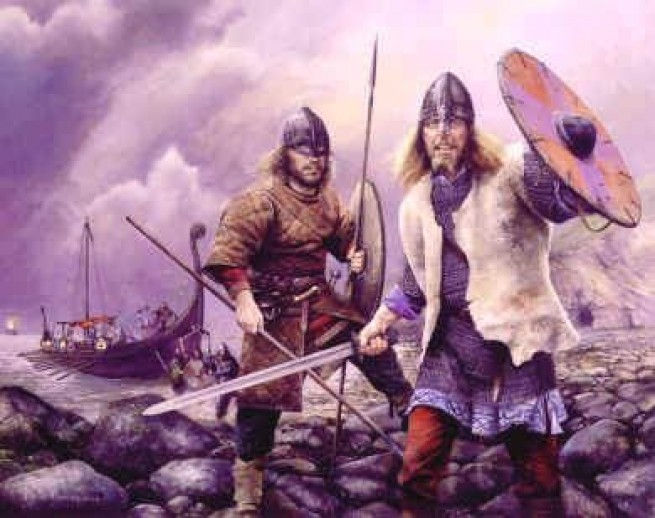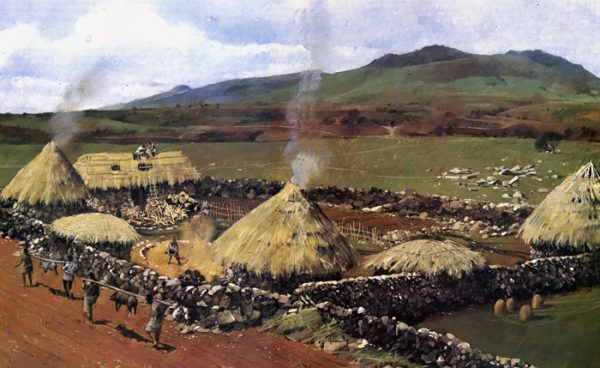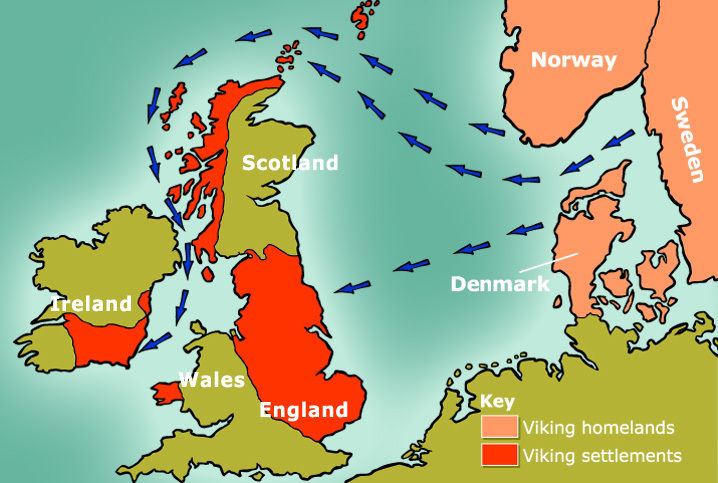Place names: Echoes of our linguistic heritage. And why people think Carlisle is in Wales.
- Rachel Zayer

- Feb 2, 2022
- 5 min read
Updated: May 26, 2023
Evidence of multi-cultural communities of ‘Viking’ Cumbria can be seen in the place names reflecting the different languages that were spoken. These people lived in an area where many of the place names that remain today have Scandinavian elements. Those ending in ‘-by’, such as Thursby, have a Viking origin. However, other places, including Cumwhitton, have a British or Anglian origin.
‘Vikings Revealed’ exhibition, Tullie House Museum and Art Gallery, Carlisle.
I’ve always been fascinated by etymology – history class for languages, the origins of the words we use and how these have developed over time. As an English native speaker with a background in French and German, I see a wealth of connections every day between everyday English vocab and their French or German counterparts. We need look no further than the quote above for evidence, or proof (Old French: évidence, Modern French: preuve) of this: communities, reflecting and remain have all entered English from Latin via Old French, while words such as names, today and ending are of Germanic origin.
With a language such as English, which is basically a melting pot of languages, it’s not only interesting to see evidence of the influence of other tongues on our modern-day language, but also to consider the story behind these influences.
An invasion of languages

Throughout its history, the island nation of Britain has been invaded, conquered, settled and ruled by foreign usurpers and settlers alike, who no matter what carnage they left in their wake or what good they did for the prosperity of the land and native Britons, brought with them from their homeland certain cultural practices, along with their language, or dialect.
From the Romans to the Anglo-Saxons to the Vikings to William the Conqueror, the British Isles saw – and heard – the arrival of Latin, West Germanic dialects (which developed into Anglo-Saxon, or what we now call Old English), dialects of the North Germanic language Old Norse and Norman French.
Language constantly evolves, and one major driver of language change is population movement. People and peoples travel around, taking their language with their luggage. The result in British English is a melange of words and terms with their origins in a vibrant variety of dialects left behind over the course of time. Very tangible proof of this cannot only be found in the English we speak today, but also in the places in which we live.
It’s all in the name
Place names can tell you a lot about a place. While we may tend to associate a given town, city, village or hamlet with a certain quality and pace of life, there is decidedly more behind a locality’s name than its ‘chocolate-box’ appeal or violent crime statistics.
Toponymy is the study of place names. It’s a vehicle that enables us to travel back in time to gain an insight into who settled where when, and the language, or dialect they spoke. In this sense, the place names we see on modern-day maps of Britain are echoes of our linguistic past, painting a picture of a multilingual landscape.
A long-forgotten, yet ever-present ancient tongue…

I opened this article with a quote from my local museum. I’m from Carlisle, in the north-west English county of Cumbria. Carlisle’s position on the border with Scotland roots the city in a Celtic past, in a region of northern England and southern Scotland known as ‘The Old North’ (or ‘Hen Ogledd’), in which a Brythonic Celtic language related to Welsh, Cornish, Breton and Pictish was once spoken. Linguistics have named this historical tongue Cumbric.
Aside from its Celtic origins, very little is known about Cumbric. (I’d never heard of it!) It is believed to have been spoken in the Early Middle Ages, becoming extinct in around the 11th or 12th century. The only evidence that remains today of this long-lost dialect is in some of the region’s place names.
Originally named Luguvalium by the Romans, who established the city, the modern name of the regional capital Carlisle comes from the Cumbric Cair – or Caer – Luel, whereby Cair – or Caer – means fort and Luel is a Celtic personal name derived from the Celtic god Lugus.
… and its Welsh cousin
The Cair/Caer element in Celtic Carlisle points to its historical linguistic relationship with Welsh. The Welsh towns of Caernarfon and Caerphilly immediately spring to mind, both bearing the same name element Caer, with the same meaning: fort. Then, of course, there’s Cardiff, or Caerdydd in Welsh.
Cumbria’s Celtic family connection with Welsh is also striking in other place names in the region. Also bearing traces of their Celtic past and the local Cumbric dialect are place names with the affix Cum-, as we see with the example of Cumwhitton in the opening quote. Further surrounding villages and hamlets that feature this element in their name include Cumdivock, Cumwhinton and Cummersdale. Cum- translates as valley, from the Cumbric cumm, which looks and sounds remarkably familiar to the Welsh for valley: cwm. In Wales, this element appears in the names of places like Cwmbran and Cwmcarn.
The map of Cumbria also features a plethora of Pens: Penrith, Penruddock, Penton. Pen comes from the Cumbric for head, top, summit, or Celtic hill or headland, and is also found throughout Wales in Penarth, Penrydd and Penybont, for example, denoting the same geographical feature.
With Cumbria’s Cumbric legacy in mind, it’s suddenly no longer surprising why so many people mistakenly think that Carlisle is in Wales! Studying the etymology of the region’s place names reveals not only a shared Celtic history, but also a shared linguistic past with Welsh.
Norse neighbourhoods
Cumbric is not, however, the only language to have left its linguistic mark in Cumbria. I touched above on Roman occupation and rule, and from the opening quote, we learn of another period in the region’s history, and another hint at local language change. In the 8th century, the Vikings began raids on Britain, capturing Carlisle in 876 and staying until the 10th century. During this period of Viking settlement, a number of Norse place names came into being.

As Tullie House’s signage informs us, “Those [place names] ending in ‘-by’, such as Thursby, have a Viking origin.” The name element -by means farmstead, village, settlement and is prevalent in the names of Cumbrian villages like Ireby, Langwathby and Scotby.
The website of the Jorvik Centre in York provides a list of common Viking place name endings and their translations. In Cumbria, the former Viking stomping grounds of the -bys live side by side with the -thorpes, -thwaites, -kelds and -kirks that feature on this list.
Clawthorpe and Melkinthorpe are, quite literally, Viking settlements, with -throp meaning settlement in Old English. [Linguistic geek alert: Note the similarity with the modern-day German for village: Dorf. Yet, modern English has gone down the Romance languages route, adopting village from the Old French vilage.] The names of the villages of Armathwaite and Micklethwaite evoke ancient woodland clearings, while Threkeld and Great Salkeld undoubtedly sprung up around springs.
And, quite possibly my favourite kind of Viking settlement of all, given its more obvious meaning through the German Kirche for church (Old Norse: kirkja): the many towns and villages around the region that include kirk in their name: Kirkbride¸ Kirkby Lonsdale, Kirklinton, Kirkoswald.
So, where do you live? What does the name of your town or village tell you about its origins? What clues does it reveal about its historical inhabitants and the language or dialect they spoke? It really is “all in the name”.








Comments